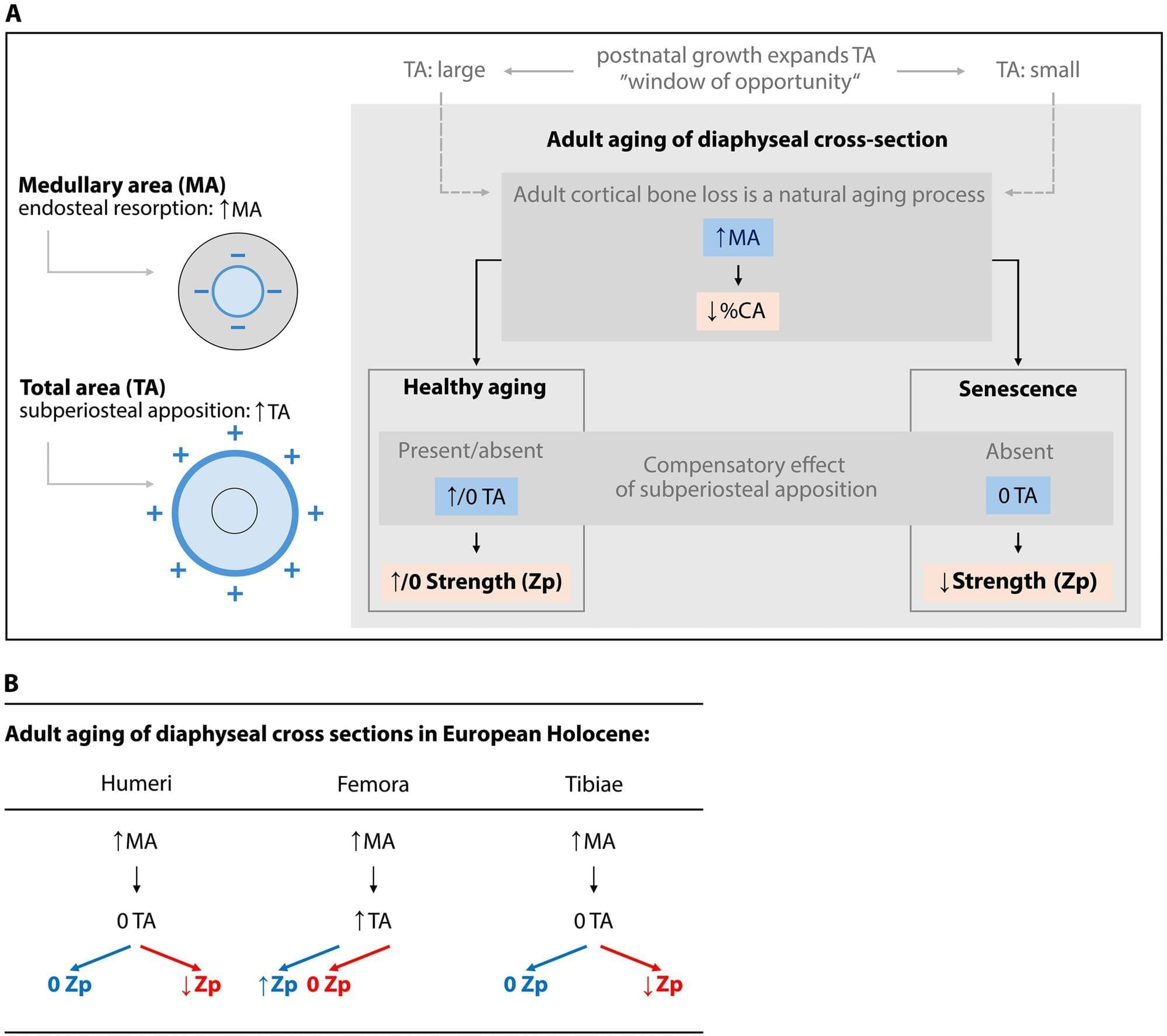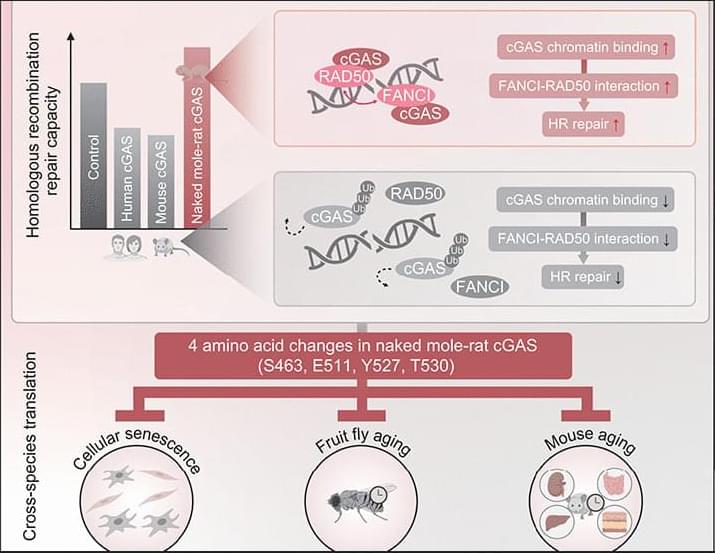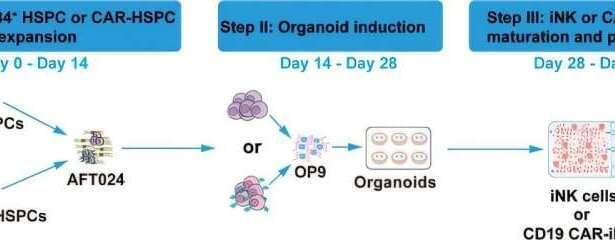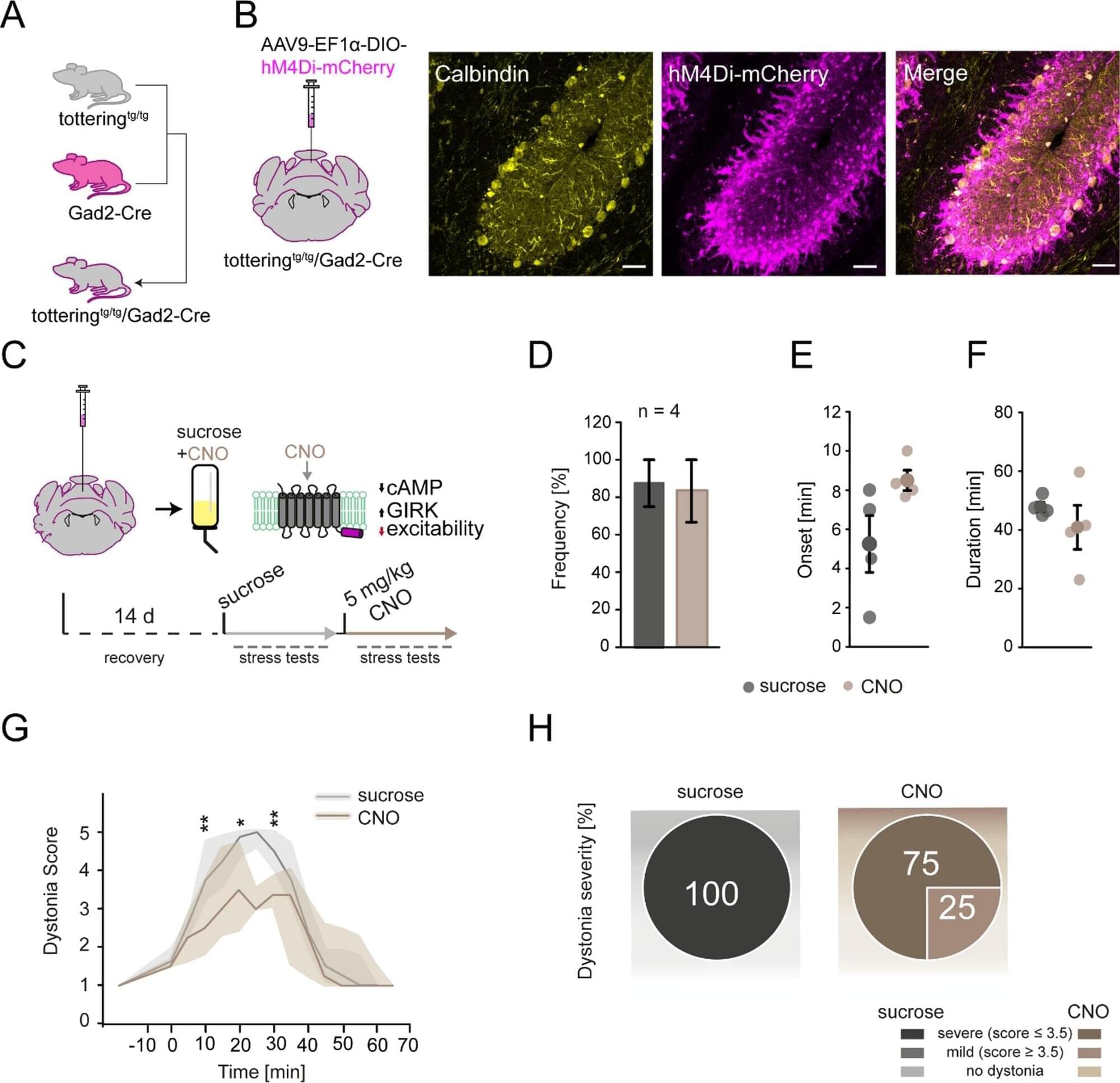How will AI transform the future of cancer treatment? This was the central question guiding a recent Cancer Research Institute (CRI) panel hosted and moderat…
Get the latest international news and world events from around the world.

Holocene skeletal samples challenge link between sedentary lifestyles and age-related bone weakening
Research led by Vladimír Sládek sheds new light on how bones age, questioning long-standing assumptions that sedentary lifestyles are the primary cause of weakening bone strength in modern humans.
The study analyzed 1,881 adult humeri, femora, and tibiae from European Holocene populations to examine how bone strength and structure change with age. Surprisingly, researchers found that patterns of diaphyseal (shaft) aging were consistent across both Early and Late Holocene adults—despite significant differences in physical activity levels between the two groups. The research is published in the journal Science Advances.
“Our findings suggest that lifestyle differences may not fully explain age-related declines in bone strength,” said Dr. Sládek. “Instead, the biology of bone growth and aging itself plays a critical role.”

A cGAS-mediated mechanism in naked mole-rats potentiates DNA repair and delays aging
Efficient DNA repair might make possible the longevity of naked mole-rats. However, whether they have distinctive mechanisms to optimize functions of DNA repair suppressors is unclear. We find that naked mole-rat cyclic guanosine monophosphate–adenosine monophosphate synthase (cGAS) lacks the suppressive function of human or mouse homologs in homologous recombination repair through the alteration of four amino acids during evolution. The changes enable cGAS to retain chromatin longer upon DNA damage by weakening TRIM41-mediated ubiquitination and interaction with the segregase P97. Prolonged chromatin binding of cGAS enhanced the interaction between repair factors FANCI and RAD50 to facilitate RAD50 recruitment to damage sites, thereby potentiating homologous recombination repair.

Engineered stem cells yield millions of tumor-fighting natural killer cells at reduced cost
Chinese researchers have developed a novel method to efficiently engineer natural killer (NK) cells for cancer immunotherapy. NK cells are central to early antiviral and anticancer defense—among other immune system roles—making them well-suited for cancer immunotherapy. For example, chimeric antigen receptor (CAR)-NK therapy involves adding a lab-built receptor (a CAR) to an NK cell, enabling it to recognize a specific antigen on a cancer cell and attack it.
However, conventional CAR-NK immunotherapies rely primarily on mature NK cells isolated from human tissues, such as peripheral blood or cord blood, which poses multiple challenges, including high heterogeneity, low engineering efficiency, high handling costs, and time-intensive processing.
Now a research team led by Prof. Wang Jinyong from the Institute of Zoology of the Chinese Academy of Sciences has developed a novel method to generate induced (that is, lab-generated) NK (iNK) cells and CAR-engineered iNK (CAR-iNK) cells from CD34+ hematopoietic stem and progenitor cells (HSPCs) derived from cord blood.


Scientists Discover Food Molecules That Trick Cells Into Staying Young
Researchers at the University of Basel in Switzerland have discovered that certain nutrients in food can cause a mild stress reaction in nematodes. Surprisingly, rather than harming the organisms, this slight stress appears to boost their overall health and help them maintain vitality as they grow o

Sleuthing for cause of deadly kidney disease in farm workers in hot climates
So many men in Chichigalpa, Nicaragua, have died from kidney failure, the town is known as the Island of the Widows. The condition that afflicts them — called chronic kidney disease of unknown origin, or CKDu — is, as its name implies, a mystery. It is a tubulointerstitial kidney disease that affects people everywhere. But researchers don’t know why rates are much higher in low-lying, hot agricultural areas like Chichigalpa, which is surrounded by sugarcane fields.
Shuchi Anand, MD, a Stanford Medicine associate professor of nephrology, has been interested in the disease since it was first described in the 1990s.
“Two-thirds of the people with this disease are men, many in their 30s and 40s,” said Anand, who is the director of the Center for Tubulointerstitial Kidney Disease. “This is the prime age of work and income generation. They are the breadwinners. This disease can devastate families.”

Does Tech, including AI, erode our cognitive abilities … or can we harness it to enhance our cognition and our lives?
Our core cognitive abilities, such as attention, working memory and IQ, are shaped partly by genetics and partly by environmental influences–which include cognitively demanding activities as well as deliberate, cognitive training. The plasticity of these cognitive functions is evident, for example, in the impact of education: as my research group and others have shown, each…

Receptor in cerebellum provides new insights into molecular basis of ataxia
Researchers at Ruhr University Bochum, Germany, identified a receptor that plays a crucial role in stress-induced motor incoordination associated with ataxias. These hereditary motor disorders have long been linked to the neurotransmitter norepinephrine.
The team, led by Dr. Pauline Bohne and Professor Melanie Mark from the Behavioral Neurobiology Working Group in Bochum, has now shown that the α1D norepinephrine receptor in the cerebellum is responsible for the symptoms. The team published these findings in the journal Cellular and Molecular Life Sciences on October 6, 2025.
People with ataxia experience recurring episodes of motor incoordination, also known as dystonia. These phases are triggered by various factors, such as physical or emotional stress, fever, alcohol, or caffeine. The episodes are triggered by the release of norepinephrine in the cerebellum, which is the most important brain region for coordinating movement. Currently, there is no cure for ataxia. Therefore, researchers want to gain a better understanding of the underlying mechanisms to find new treatment approaches.
Terence Tao on the cosmic distance ladder
Excellent visualizations and explanations here!
(30 mins. approx.)
The Cosmic Distance Ladder: How we learned distances in the heavens.
Patreon supporters see early views of new videos: https://www.patreon.com/3blue1brown.
Artwork by Kurt Bruns.
Thanks to Paul Dancstep for several animations, such as the powers of 10 zoom out and the simulations of shadows on the moon.
Terry has kindly cataloged many of the added nuances, including a few corrections, in this post: